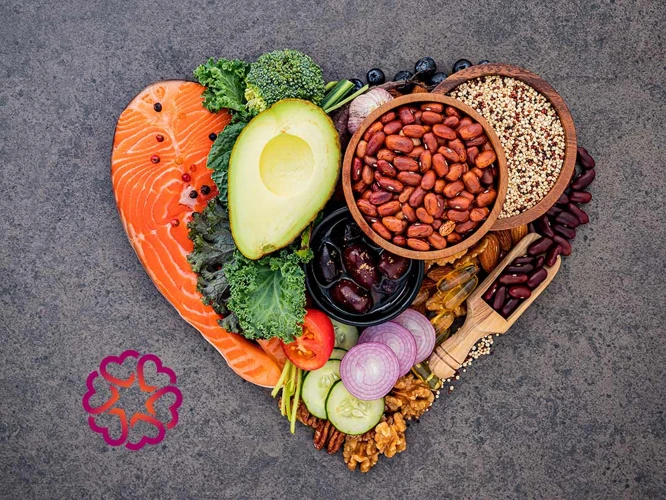Introduction: The Importance of Eating Fiber
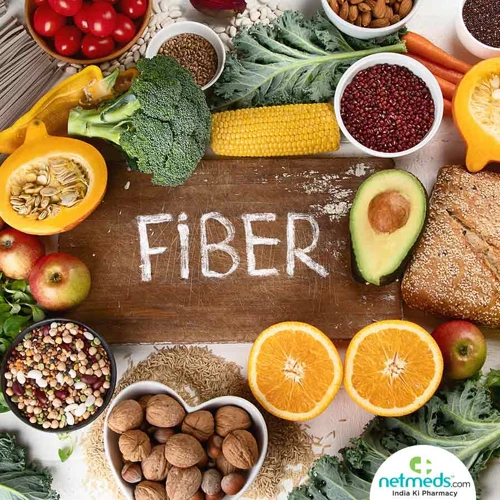
Fiber is an essential nutrient that plays a crucial role in maintaining overall health and wellness. Fiber is a type of carbohydrate that the body cannot digest, so it passes through the digestive system mostly intact. There are two types of fiber: soluble and insoluble. Soluble fiber dissolves in water, forming a gel-like substance that can help lower cholesterol and regulate blood sugar levels. Insoluble fiber, on the other hand, adds bulk to stool and helps promote regularity in bowel movements.
Eating a diet rich in fiber has numerous benefits for overall health, including digestive health, cardiovascular health, and weight management. Unfortunately, many people do not consume enough fiber in their diets, and this can lead to a range of health problems.
Incorporating high-fiber snacks into your diet can be an easy and delicious way to increase your daily fiber intake. Not only can fiber-rich snacks help keep you feeling full and satisfied, but they can also support weight management by promoting healthy digestion and regulating blood sugar levels. In this article, we will explore the benefits of adding fiber to your snacks for weight management and provide some simple snack ideas that you can try today.
How Fiber Can Help with Weight Management
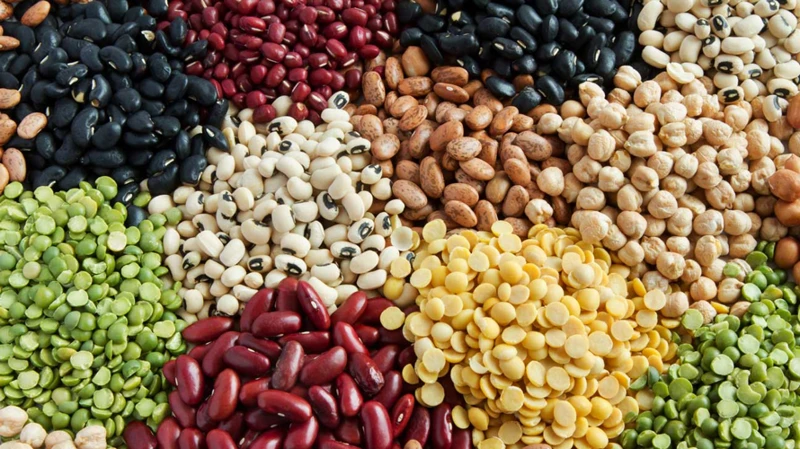
Many people struggle with managing their weight and finding effective ways to lose unwanted pounds. However, one simple yet often overlooked solution is to incorporate more fiber into your diet. Fiber is an essential nutrient that plays a crucial role in maintaining a healthy weight. In this section, we will explore the ways in which fiber can help with weight management, and provide you with useful tips and information to help you get on track towards a healthier, happier you.
1. Increased Satiety
Fiber helps with weight management by increasing satiety or the feeling of fullness after eating. This means that incorporating high-fiber snacks into your diet can help you feel satisfied with smaller portions of food, leading to fewer calories consumed overall.
How exactly does fiber increase satiety?
- Fiber takes longer to digest and slows down the emptying of the stomach. This helps to prolong feelings of fullness and prevent overeating.
- Fiber absorbs water and swells up in the stomach, which also contributes to feelings of fullness.
- Fiber-rich foods tend to be low in energy density, meaning they provide fewer calories per gram of food. This makes it easier to fill up on fewer calories.
Incorporating high-fiber snacks into your diet can be a simple and effective way to increase satiety and promote weight management. Some great snack options include fruits and vegetables, nuts and seeds, and whole-grain snacks.
2. Reduced Caloric Intake
One of the key benefits of adding fiber to your snacks for weight management is reduced caloric intake. Foods high in fiber tend to be more filling and satisfying than those low in fiber, which can help control hunger and prevent overeating.
When you consume foods high in fiber, they tend to take up more space in your stomach and take longer to break down than low-fiber foods. This means you are more likely to feel full and satisfied after a smaller portion size, reducing your overall caloric intake.
To take advantage of this benefit, try incorporating high-fiber snacks into your daily routine. Some good options include:
- A bowl of fresh berries (raspberries, blueberries, strawberries) for a sweet and satisfying snack
- A handful of almonds or pistachios for a protein and fiber-packed snack
- Roasted chickpeas seasoned with spices for a crunchy, high-fiber snack
By swapping out low-fiber snacks for these high-fiber options, you can reduce your overall caloric intake without feeling deprived or hungry. This can help support your weight management goals and make it easier to maintain a healthy weight over time.
However, it’s important to keep in mind that adding fiber to your diet is not a magic solution for weight loss. You still need to pay attention to portion sizes and overall calorie intake in order to see results. Focus on incorporating a variety of high-fiber foods into your diet and being mindful of your hunger and fullness cues in order to achieve lasting weight management success.
3. Lowered Insulin Response
One of the lesser-known benefits of adding fiber to your snacks for weight management is the lowered insulin response that comes with it. When we consume foods high in sugar or simple carbohydrates, our body releases insulin to help distribute the glucose to our cells for energy. However, when we constantly consume high sugar, low-fiber foods, our body can become resistant to insulin, and excess glucose can build up in the bloodstream. This can lead to a wide range of health problems, including weight gain.
But, when we eat foods high in fiber, like fruits, vegetables, and whole grains, it slows down the release of glucose into our bloodstream. This gives our body time to properly absorb and use the glucose for energy, without overloading our system with too much at once. By doing so, our body is able to produce less insulin in response to the food we eat.
Studies have shown that incorporating more fiber into your diet can lead to improved insulin sensitivity, which means your body is more efficient at using the insulin it produces. This not only helps with weight management but also decreases the risk of developing type 2 diabetes.
Here is a comparison between a high-fiber and a low-fiber meal:
| High-Fiber Meal | Low-Fiber Meal |
| Grilled chicken breast | Fried chicken breast |
| Roasted sweet potato | Mashed potato |
| Steamed broccoli | Canned corn |
| Whole grain roll | White bread roll |
As you can see, the high-fiber meal includes a variety of fiber-rich foods, while the low-fiber meal consists of processed, low-fiber options. By choosing the high-fiber meal, you can help lower your insulin response, leading to improved weight management and overall health.
Types of High-Fiber Snacks to Incorporate

When it comes to incorporating high-fiber snacks into your diet, it’s important to have a variety of options. Fortunately, there are many delicious and nutritious snacks that are high in fiber to choose from. By including a mix of fruits, vegetables, nuts, seeds, and whole grain snacks, you can increase your fiber intake and support your weight management goals. Let’s take a closer look at some of the top high-fiber snack options and how you can incorporate them into your diet.
1. Fruits and Vegetables
Fruits and vegetables are a great source of fiber and can easily be incorporated into your daily diet as healthy snacks. Here are some options to consider as snack ideas:
- Apples: Apples are a great source of fiber and easy to take on the go. Eating an apple as a snack can help you feel fuller for longer.
- Berries: Berries, such as strawberries, blueberries, and raspberries, are a delicious snack option and are high in fiber.
- Carrots: Baby carrots are a convenient snack option and are packed with fiber. They are also low in calories and can be eaten raw or with a dip, such as hummus.
- Celery: Celery is another low-calorie snack option that is high in fiber. It can be eaten plain or with a topping, such as peanut butter or cream cheese.
- Bell peppers: Bell peppers are a colorful and crunchy snack option that are also high in fiber. They can be sliced and enjoyed raw or roasted.
- Oranges: Oranges are a juicy snack option that are high in fiber and vitamin C. Eating an orange as a snack can help satisfy your sweet tooth while also providing important nutrients.
By incorporating more of these fiber-rich fruits and vegetables into your daily snack routine, you can increase your intake of important nutrients and support your weight management goals.
2. Nuts and Seeds
One great way to snack while increasing your fiber intake is by incorporating nuts and seeds into your diet. Nuts and seeds are a great source of fiber, protein, healthy fats, and other essential nutrients.
Here are some nuts and seeds to consider adding to your snack rotation:
- Almonds: These nuts are not only high in fiber but also a good source of vitamin E, magnesium, and protein. They make a great addition to yogurt, oatmeal, or can be consumed on their own as a snack.
- Pistachios: Another nut high in fiber, pistachios are also a good source of vitamin B6, potassium, and antioxidants. They can be eaten on their own, added to a trail mix, or sprinkled on top of a salad for some extra crunch.
- Chia Seeds: These tiny seeds are packed with fiber, omega-3 fatty acids, and antioxidants. They can be added to smoothies, yogurt, or oatmeal to boost their nutritional value.
- Pumpkin Seeds: These seeds are a great source of fiber, protein, and magnesium. Roasted pumpkin seeds make for a delicious and nutritious snack, especially during the fall season.
- Sunflower Seeds: Another delicious and nutritious snack, sunflower seeds are high in fiber, protein, vitamin E, and other important nutrients. They can be added to a trail mix or sprinkled on top of a salad for some extra crunch.
Adding nuts and seeds to your snacks can help increase your fiber intake, keep you feeling full for longer, and provide your body with important nutrients. Just make sure to watch your portion sizes as they can be high in calories.
3. Whole Grain Snacks
Whole grains are an excellent snack option for those looking to increase their fiber intake. These snacks are packed with complex carbohydrates, vitamins, and minerals, making them a nutritious and satisfying option. Here are some examples of whole grain snacks that you can incorporate into your diet:
| Snack | Amount of Fiber (per serving) |
| Whole grain crackers | 3-5 grams |
| Whole grain rice cakes | 2-3 grams |
| Popcorn (air-popped) | 3-4 grams |
| Whole wheat pretzels | 3-4 grams |
By opting for whole grain snacks over processed snacks, you can increase your fiber intake without sacrificing taste or satisfaction. These snacks also tend to have a lower glycemic index, which means that they won’t cause a rapid spike in blood sugar levels. Additionally, the high fiber content of whole grain snacks can promote feelings of fullness and prevent overeating. Incorporating whole grain snacks into your diet can be an easy and delicious way to increase your fiber intake and support your weight management goals.
Simple Snack Ideas with Fiber
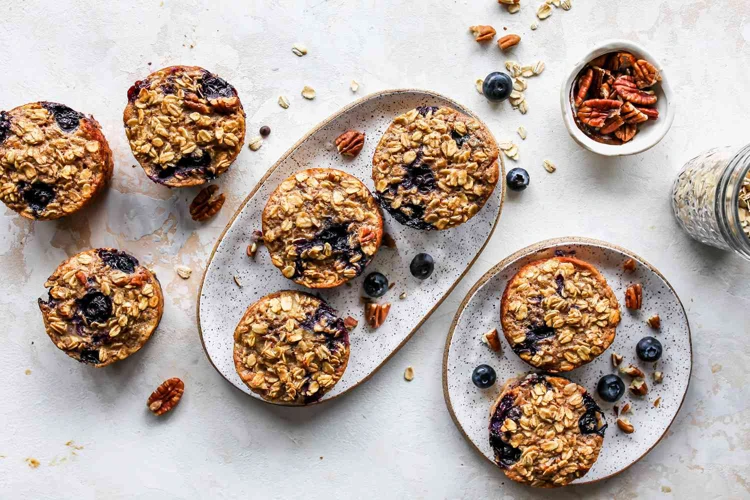
Looking for quick and easy snack ideas that are high in fiber? Look no further than the following suggestions! These snack ideas provide a great way to add fiber to your diet, which can help with weight management, digestion, and overall health. From apple slices with peanut butter to roasted chickpeas to popcorn with nutritional yeast, these snacks are not only delicious but also easy to prepare and take on-the-go. So, let’s dive in and explore these simple snack ideas that are rich in fiber.
1. Apple Slices with Peanut Butter
One simple snack idea with fiber is pairing apple slices with peanut butter. This delicious combination not only provides a satisfying crunch, but also offers a range of nutrients and health benefits. Here are some reasons to try this snack:
- Rich in fiber: Apples are a good source of both soluble and insoluble fiber, with approximately 4 grams of fiber in a medium-sized apple. Pairing apples with peanut butter, which contains around 3 grams of fiber per tablespoon, increases the overall fiber content of the snack.
- Provides protein and healthy fats: Peanut butter is a great source of plant-based protein and heart-healthy monounsaturated fats. This combination can help keep you feeling full and satisfied between meals.
- Offers vitamins and minerals: Apples are a good source of vitamin C, potassium, and various antioxidants. Peanut butter also contains important nutrients, such as vitamin E, magnesium, and iron.
- Can help with weight management: The high fiber and protein content of this snack can help promote feelings of fullness and reduce overall calorie intake, which may aid in weight management efforts.
To make this snack, simply cut an apple into slices and spread some natural peanut butter on each slice. For an added crunch, sprinkle some chopped nuts or granola on top. This snack is perfect for on-the-go, as a midday pick-me-up, or as a pre-workout snack.
2. Roasted Chickpeas
Roasted chickpeas are another great high-fiber snack idea that you can easily make at home. They are not only delicious but also a good source of plant-based protein. Here are the steps to make them:
- Preheat the oven: Preheat your oven to 400°F (200°C) while you prepare the chickpeas.
- Drain and rinse the chickpeas: Drain a can of chickpeas and rinse them under running water. Spread them out on a clean towel and pat them dry. Remove any loose skins if any.
- Toss with oil and seasonings: Place the chickpeas in a mixing bowl and toss with 1-2 tablespoons of olive oil or avocado oil, 1 teaspoon of smoked paprika, and 1/2 teaspoon of sea salt. Give them a good stir until the chickpeas are coated evenly.
- Roast in the oven: Transfer the chickpeas to a baking sheet lined with parchment paper. Spread them out in a single layer and roast in the preheated oven for 20-25 minutes or until golden and crispy. Make sure to give them a stir halfway through for even cooking.
- Cool and store: Remove the chickpeas from the oven and let them cool for a few minutes before serving. Store any leftovers in an airtight container at room temperature for up to 3 days.
Roasted chickpeas are a crunchy and filling snack that you can enjoy anytime you need a quick energy boost. They are also versatile and can be seasoned with different herbs and spices to suit your taste. Just be careful not to overindulge, as they are high in fiber and can cause bloating if consumed in large amounts.
3. Popcorn with Nutritional Yeast
Popcorn is a delicious and low-calorie snack that can be a great source of dietary fiber when prepared in a healthy way. Adding nutritional yeast to popcorn can not only increase its fiber content but also provide a rich savory flavor. Nutritional yeast is a type of deactivated yeast that is a good source of protein, vitamins, and minerals, especially vitamin B12. It has a nutty and cheesy taste that can add a burst of flavor to your popcorn.
Here are some easy steps to make popcorn with nutritional yeast:
Ingredients:
- 1/2 cup of popcorn kernels
- 1-2 tablespoons of nutritional yeast
- 1 tablespoon of olive oil or coconut oil
- 1/4 teaspoon of sea salt (optional)
Instructions:
- Heat the oil in a medium-sized pot with a tight-fitting lid over medium-high heat.
- Put the popcorn kernels in the pot and cover it with the lid. Shake the pot a little bit to coat the kernels with oil.
- After a minute, you’ll hear the kernels begin to pop. Shake the pot every 10-15 seconds to ensure even popping.
- When the popping slows down, remove the pot from the heat and let it sit for a minute to allow all the kernels to pop.
- Carefully pour the popcorn into a bowl.
- Sprinkle the nutritional yeast and sea salt to taste over the hot popcorn, and then mix well.
This snack is a healthy alternative to processed snack foods that are often high in calories, salt, and unhealthy fat. It’s a great way to satisfy your craving for something crunchy and savory without derailing your healthy eating plan. Plus, since popcorn is a whole grain, it provides a slow release of energy that can keep you feeling full longer. So next time you’re craving a snack, try some popcorn with nutritional yeast!
Don’t Forget to Drink Water
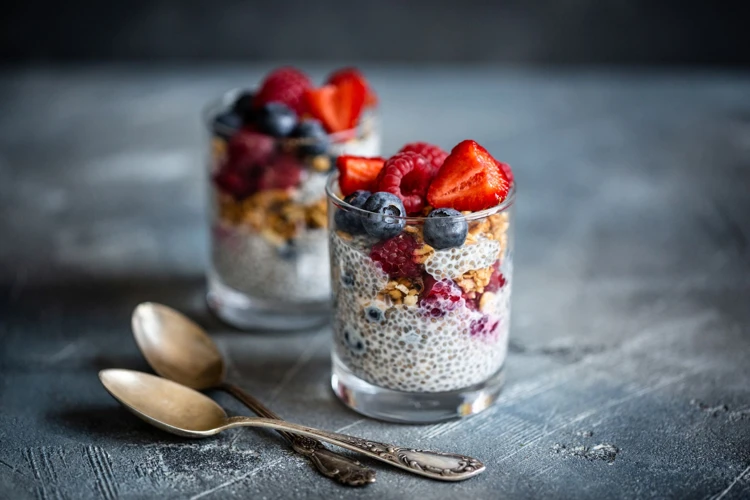
Proper hydration is crucial when increasing your fiber intake. Fiber absorbs water in the digestive system, which is essential for its proper functioning. Without enough water, adding fiber to your snacks can actually lead to constipation and discomfort. It is important to drink plenty of water throughout the day, especially when consuming high-fiber foods.
As a rule of thumb, experts recommend drinking at least eight glasses of water per day, but the amount of water you need can vary depending on your body weight, activity level, and climate. It’s best to listen to your body and drink when you feel thirsty. You can also try adding natural flavors to your water by infusing it with herbs, fruits, or vegetables to make it more interesting.
If you struggle to drink enough water, try carrying a reusable water bottle with you throughout the day, setting reminders on your phone, or incorporating more water-rich foods like berries, watermelon, cucumbers, and lettuce into your snacks. By staying properly hydrated, you can avoid potential digestive issues and make the most of the weight management benefits of adding fiber to your diet.
Precautions When Increasing Fiber Intake
Before you start drastically increasing your fiber intake, it’s important to take some precautions to ensure a smooth transition. While adding fiber to your diet has numerous benefits for weight management, making sudden changes without proper precautions could lead to discomfort and even digestive issues. In this section, we’ll discuss some helpful tips to keep in mind as you begin to incorporate more fiber into your diet.
1. Gradually Increase Intake
When it comes to increasing your fiber intake for weight management, it’s crucial to do so gradually to avoid digestive discomfort. Rushing into a high-fiber diet can cause bloating, gas, and even constipation. It’s best to start with small amounts and gradually increase over time. Here are some tips to help you do so:
- Add One High-Fiber Snack per Day: Start by incorporating only one high-fiber snack per day into your diet. This could be a fruit or vegetable with the skin on or a serving of nuts.
- Increase Over a Few Weeks: Once you’ve successfully added one high-fiber snack per day, increase to two snacks per day after a few weeks. This will allow your body to adjust gradually and minimize any digestive discomfort.
- Watch for Symptoms: Be aware of any symptoms of digestive discomfort as you increase your fiber intake, such as bloating, gas, or abdominal pain. If you experience any of these symptoms, decrease your fiber intake until your body adjusts.
Gradually increasing your fiber intake is an essential strategy for improving your health and managing your weight. However, it’s crucial to listen to your body and proceed at a pace that works for you. By incorporating high-fiber snacks into your diet gradually and watching for symptoms, you can successfully increase your fiber intake and reap the benefits for your overall health and weight management.
2. Drink Plenty of Water
It is essential to drink plenty of water when increasing your fiber intake. When you eat more fiber, it absorbs water and swells up in your digestive system, which helps keep you feeling full and satisfied. However, if you do not drink enough water along with your fiber-rich snacks, it can lead to constipation and other digestive issues.
Here are some tips to help you drink more water along with your high-fiber snacks:
- Carry a reusable water bottle with you to work or when you’re out and about.
- Set reminders on your phone or computer to drink water throughout the day.
- Add lemon, lime, or cucumber slices to your water to give it a refreshing taste.
- Drink a glass of water before and after eating your fiber-rich snack.
- Make sure to drink at least eight glasses of water per day.
Adequate water intake is crucial for optimal digestion and overall health. So, make sure to drink plenty of water along with your fiber-rich snacks to reap the full benefits of fiber for weight management.
3. Choose Fiber-Rich Foods Wisely
When it comes to choosing high-fiber foods, it’s important to make wise choices. While many processed and packaged foods are marketed as being high in fiber, they may also contain added sugars and other unhealthy ingredients. That’s why it’s important to focus on natural, whole foods that are rich in fiber.
Here are some examples of fiber-rich foods that are also healthy options:
| Fiber-Rich Food | Nutritional Benefits |
|---|---|
| Avocado | High in heart-healthy monounsaturated fats and vitamin E |
| Chia seeds | Source of omega-3 fatty acids, protein, and calcium |
| Quinoa | A complete protein source and gluten-free alternative to grains |
| Flaxseed | Rich in omega-3 fatty acids and lignans that may have cancer-fighting properties |
| Broccoli | High in vitamin C and other antioxidants, as well as beneficial compounds that may help prevent cancer |
By choosing whole foods that are naturally high in fiber, you’ll not only be supporting your weight management goals but also promoting overall health and wellness.
Conclusion: The Importance of Eating Fiber for Weight Management
Eating a diet that is high in fiber has proven to be beneficial for overall health and is particularly effective for weight management. By incorporating high-fiber snacks into your diet, you can increase satiety, reduce caloric intake, and lower the insulin response. These benefits can help you maintain a healthy weight and reduce your risk of chronic diseases.
It’s important to choose the right types of fiber-rich foods, such as fruits, vegetables, nuts, seeds, and whole grains, in order to get the most benefit. Incorporating simple snack ideas, such as apple slices with peanut butter or roasted chickpeas, can be an easy way to increase your fiber intake and help manage your weight.
However, it’s also important to gradually increase your fiber intake and drink plenty of water to prevent digestive discomfort. Choosing fiber-rich foods wisely is also important, as some can be high in added sugars or sodium.
Adding fiber to your snacks is a simple and effective way to improve your weight management efforts and overall health. By making smart choices and incorporating high-fiber foods into your daily diet, you can reap the benefits and feel great. So go ahead and snack on some fiber!
Frequently Asked Questions
What exactly is fiber?
Fiber is a plant-based carbohydrate that the body cannot fully digest.
How much fiber should I be eating per day?
The adequate intake for fiber is around 25-30 grams per day.
Can fiber supplements help with weight management?
Fiber supplements can contribute to weight management, but it is always recommended to obtain fiber through whole foods.
What are the benefits of a high-fiber diet?
Benefits of a high-fiber diet include improved digestion, weight management, and reduced risk of chronic diseases such as heart disease and type 2 diabetes.
Can high-fiber snacks be unhealthy?
Yes, some high-fiber snacks can be unhealthy if they are high in sugar or processed ingredients. Always choose whole, minimally processed foods for the most benefits.
Can fiber cause digestive discomfort?
Increasing fiber intake too quickly may cause digestive discomfort such as bloating and gas. Gradually increase fiber intake to prevent discomfort.
Can fiber-rich snacks be satisfying?
Yes, fiber-rich snacks can be satisfying due to their ability to increase satiety and reduce hunger cravings.
Can fiber-rich snacks be portable for on-the-go snacking?
Yes, many fiber-rich snacks such as nuts and fruits can be easily portable for on-the-go snacking.
Do all high-fiber snacks have to be low in calories?
No, high-fiber snacks do not have to be low in calories. However, choosing high-fiber snacks that also have a balance of protein and healthy fats can contribute to weight management goals.
Can fiber intake help with overall health in addition to weight management?
Yes, fiber intake can improve overall health by reducing the risk of chronic diseases such as heart disease and improving digestion.

